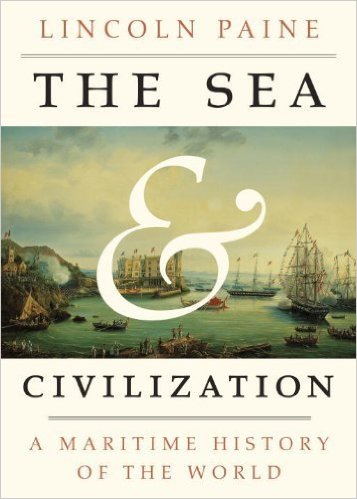
The Sea and Civilization: A Maritime History of the World
Tom Verde
Lincoln Paine
2013, Alfred A. Knopf, 978-1-40004-409-2, $40 hb.
As proud as we are of our terrestrial accomplishments, there is no ignoring the fact that 71 percent of the globe is ocean. Looking through the lens of maritime history on civilization as it emerged, developed and continues to be sustained is Lincoln Paine’s objective in this nearly 800-page volume which opens with this challenging salvo: “I want to change the way you see the world.” Looking in to land, as opposed to out to sea, Paine devotes a fair amount of his study to the watery highways of the Muslim world and its many trading ports, from medieval China to the modern Persian Gulf. The lateen sail, Christian-Muslim maritime relations in the Mediterranean, Berber (as in “Barbary”) pirates, the role of the sea in the spread of Islam itself, and more are addressed in this scholarly yet readable account of how crucial maritime travel, trade and exploration have been to human history.
You may also be interested in...

The Great British Bake Off Winner Nadiya Hussain Gathers Global Recipes in Culinary Celebration of Ramadan
Nadiya Hussain's diverse recipes highlight the global unity of Muslim cultures and cuisines..png?cx=0.45&cy=0.59&cw=382&ch=519.4922937443337)
New Book Decodes Mystery Behind Sixth Century Mosaic Pavement
Jane Chick’s 2024 study on enigmatic Libyan mosaic bridges Late Antiquity Roman and early ecclesiastical art.